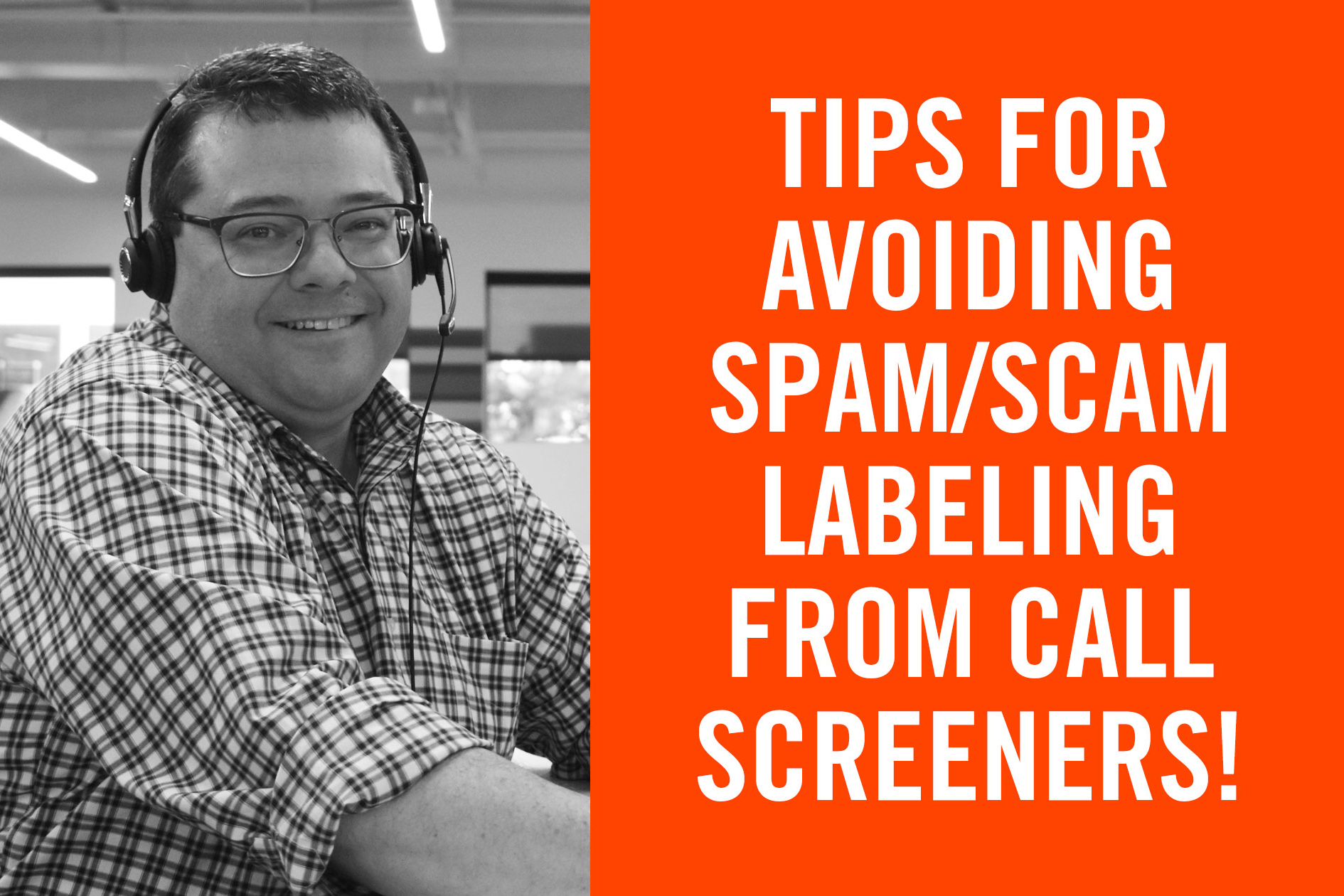To combat the flood of Robocalls, many phone providers have instituted their own call screener systems. These services are installed on the mobile phone and are intended to warn their customers when an incoming call is deemed likely to be an abusive number by slapping a “Possible SCAM/SPAM caller” label on the incoming call. Often when a call comes in like this the actual name of the company isn’t even displayed – instead, the warning takes the place of the company name.
For example, you call your favorite customer, Martha, and as soon as she picks up the first thing she tells you is: “Oh Hi There! I almost didn’t take your call – my phone said you might be SPAM.”
This is a frustrating scenario to hear about, and the sad truth is that businesses are hearing it more and more lately as Robocalling has risen to prominence.
Incoming SPAM/SCAM Warnings from Call Screeners
At first, many may think that this all doesn’t sound so bad – kind of useful really. And it would be – if you could count on the screening algorithms to get the determination right most of the time. The problem arises when you realize how imperfect these detection services can be, and the impact your business can suffer when your incoming calls throw up a SPAM/SCAM warning on the customer’s call screener.
Common Call Screener Patterns
Sadly, there is little to no information for what goes into the decision to label your business number as a potential abuser. They do often refer to common call patterns common factors, such as:
- Numerous calls to widely ranged area codes. i.e. you seem to be calling all over the country.
- Repeated calls to the same number with little/no actual talk time
- Customers blocking your number on their own phones.
- Customer complaints, registering a complaint against your company can often end up increasing the chance of being given a dubious label by the call screener software.
However, there is no means to determine what weight each of these factors has in determining the outcome for a particular result. Did a customer block your number one too many times, or did you pass some heuristic threshold making too many calls to multiple states, or something else entirely?
Register Your Phone Number
If we cannot fix the algorithms, and this truly is an impossible task, then wouldn’t it be nice to at least be able to register your phone number with a centralized authority, indicating you are a legitimate business and not an abuser of phone systems?
Fortunately, there is a company that can help with this. It is not an official authority, but they do seem to do a decent job of validating your business numbers to avoid this mis-labeling by call screeners. We pass along this reference because it truly is one of the few options available to the distressed owner of a mis-labeled business number. The site, to which we are unaffiliated, is called Call Transparency, located at the following web URL: https://calltransparency.com
Call Screener Trusted Business Entity
You’ll find a number of resources here, but the one that can help protect you against call screener mis-labeling is to register with them as a “trusted business entity”. This is a free process and is the best way (only way, really) that we have found to actually clear the SCAM/SPAM labeling in many cases.
The process of clearing the good name of your phone numbers does take time, and you have to go through a vetting process where they will phone your business to ensure it is legitimate. Once registered, however, you will find the call screeners are less likely to mis-label your number as SPAM/SCAM.
We have gone through this process for a few of our clients, to become familiar with the details, but this is something you don’t need your phone administrator to do for you. You can register your business numbers yourself and can begin that process here: https://www.calltransparency.com/registration
Inbound and Outbound Traffic
Aside from standard information, you will need an estimate of the inbound and outbound traffic your phone numbers utilize. You can either request that information from your phone provider, or if their bill is detailed enough, you can pull the information from your last invoice.
Validating Your Phone Number
In the cases where we ran this process through for a customer, the full process did take several months. Mostly there seemed to be a long waiting period before they reached the point of validating the phone numbers. Once that validation had occurred, the legitimizing effects were relatively rapid.
Hopefully, this article has helped provide a lifeline to someone who finds their business number is mislabeled and doesn’t know what to do to try and go about fixing the problem.
#CallerID #CallScreener
To learn more about RDI Intuitive Technical, contact us!
